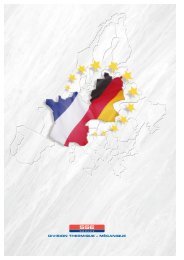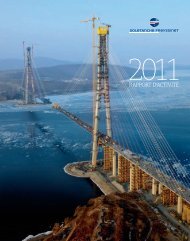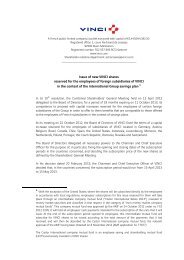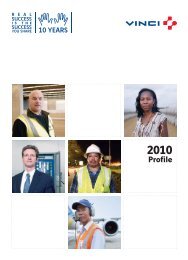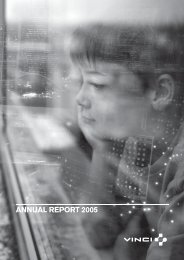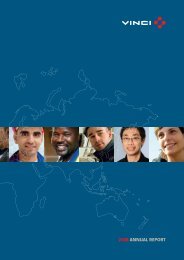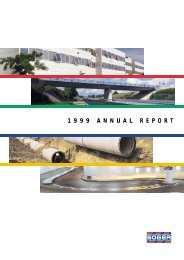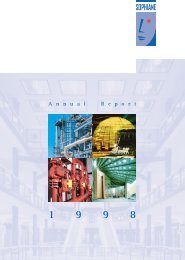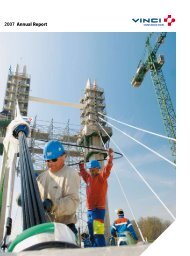CFE - 2006 annual report - Vinci
CFE - 2006 annual report - Vinci
CFE - 2006 annual report - Vinci
- TAGS
- annual
- vinci
- publi.vinci.com
You also want an ePaper? Increase the reach of your titles
YUMPU automatically turns print PDFs into web optimized ePapers that Google loves.
1 1 8<br />
F. Goodwill<br />
1. Goodwill<br />
Goodwill represents the excess of the cost of an acquisition over the fair value of the company’s share of the net identifiable<br />
assets of the acquired subsidiary, jointly controlled entity or associate at the date of acquisition.<br />
Goodwill is not amortized but will be subject to an impairment test on an <strong>annual</strong> basis. Goodwill is expressed in the currency<br />
of the subsidiary to which it relates. Goodwill is stated at cost less accumulated amortization and impairment losses. In res-<br />
pect of associates, the carrying amount of goodwill is included in the carrying amount of the investment in the associate.<br />
2. Negative goodwill<br />
Negative goodwill represents the excess of the fair value of the company’s share of the net identifiable assets acquired over<br />
the cost of acquisition.<br />
Negative goodwill is recognized immediately in the income statement.<br />
G. Property, plant and equipment<br />
1. Measurement & recognition<br />
All property, plant and equipment are recorded in assets only when it is probable that future economic benefits will impact<br />
the entity and if the cost can be evaluated in a reliable way. These criteria are applicable at the time of initial accounting and<br />
for later expenditure.<br />
All property, plant and equipment are recorded at historical cost less accumulated depreciation and impairment losses.<br />
Historical cost includes the original purchase price and other direct acquisition costs (e.g. non refundable tax, transport).<br />
The cost of self-constructed assets includes the cost of materials, direct labour and an appropriate proportion of production<br />
overheads.<br />
2. Subsequent expenditures<br />
Subsequent expenditures are capitalized only when it increases the future economic benefits embodied in the item of pro-<br />
perty, plant and equipment. Repairs and maintenance, which do not increase the future economic benefits of the asset to<br />
which they relate, are expensed as incurred.<br />
3. Depreciations<br />
Depreciations are calculated from the date the asset is available for use, using the straight-line method over the estimated<br />
useful lives of the assets:<br />
Trucks: 3 years<br />
Vehicles: 3 to 5 years<br />
Other material: 5 years<br />
Computer installation: 3 years<br />
Office machines: 5 years<br />
Office equipment: 10 years<br />
Constructions: 25 to 33 years



